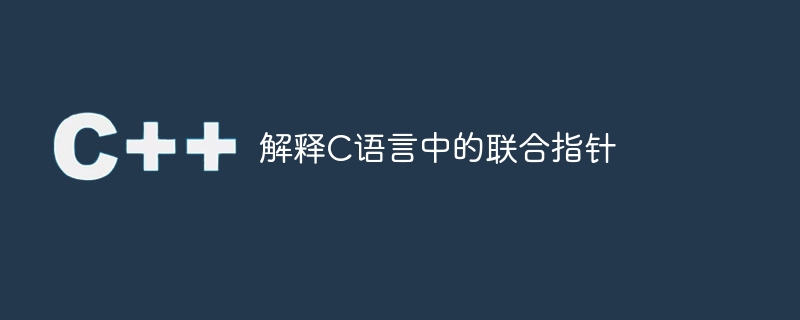

A union is a memory location shared by multiple variables of different data types.
The syntax of pointer to union in C programming is as follows -
union uniontag{
datatype member 1;
datatype member 2;
----
----
datatype member n;
};The following example shows the usage of union of structures.
union sample{
int a;
float b;
char c;
};The following is the declaration of joint variables. It has three types as follows −
union sample{
int a;
float b;
char c;
}s;union{
int a;
float b;
char c;
}s;union sample{
int a;
float b;
char c;
};
union sample s;When declaring a union, the compiler will automatically create the largest size variable type to accommodate the variables in the union.
Only one variable can be referenced at any time.
Use the same structure syntax to access union members.
The dot operator is used to access members.
The arrow operator (->) is used to access members using pointers.
We can use pointers to unions and use the arrow operator (->) to access members, just like a structure.
The following program shows the usage of pointers to unions in C programming -
Live Demo
#include <stdio.h>
union pointer {
int num;
char a;
};
int main(){
union pointer p1;
p1.num = 75;
// p2 is a pointer to union p1
union pointer* p2 = &p1;
// Accessing union members using pointer
printf("%d %c", p2->num, p2->a);
return 0;
}When the above program is executed, it produces the following results −
75 K
Consider the same example with different inputs.
Real-time demonstration
#include <stdio.h>
union pointer {
int num;
char a;
};
int main(){
union pointer p1;
p1.num = 90;
// p2 is a pointer to union p1
union pointer* p2 = &p1;
// Accessing union members using pointer
printf("%d %c", p2->num, p2->a);
return 0;
}When the above program is executed, it produces the following results −
90 Z
The above is the detailed content of Explain union pointers in C language. For more information, please follow other related articles on the PHP Chinese website!
 Usage of UpdatePanel
Usage of UpdatePanel
 How do I set up WeChat to require my consent when people add me to a group?
How do I set up WeChat to require my consent when people add me to a group?
 How to use spyder
How to use spyder
 What is the difference between css framework and component library
What is the difference between css framework and component library
 Configure HOSTS file
Configure HOSTS file
 What are the methods of remote computer maintenance?
What are the methods of remote computer maintenance?
 What are the common testing techniques?
What are the common testing techniques?
 Usage of drawstring
Usage of drawstring
 How is the performance of thinkphp?
How is the performance of thinkphp?




